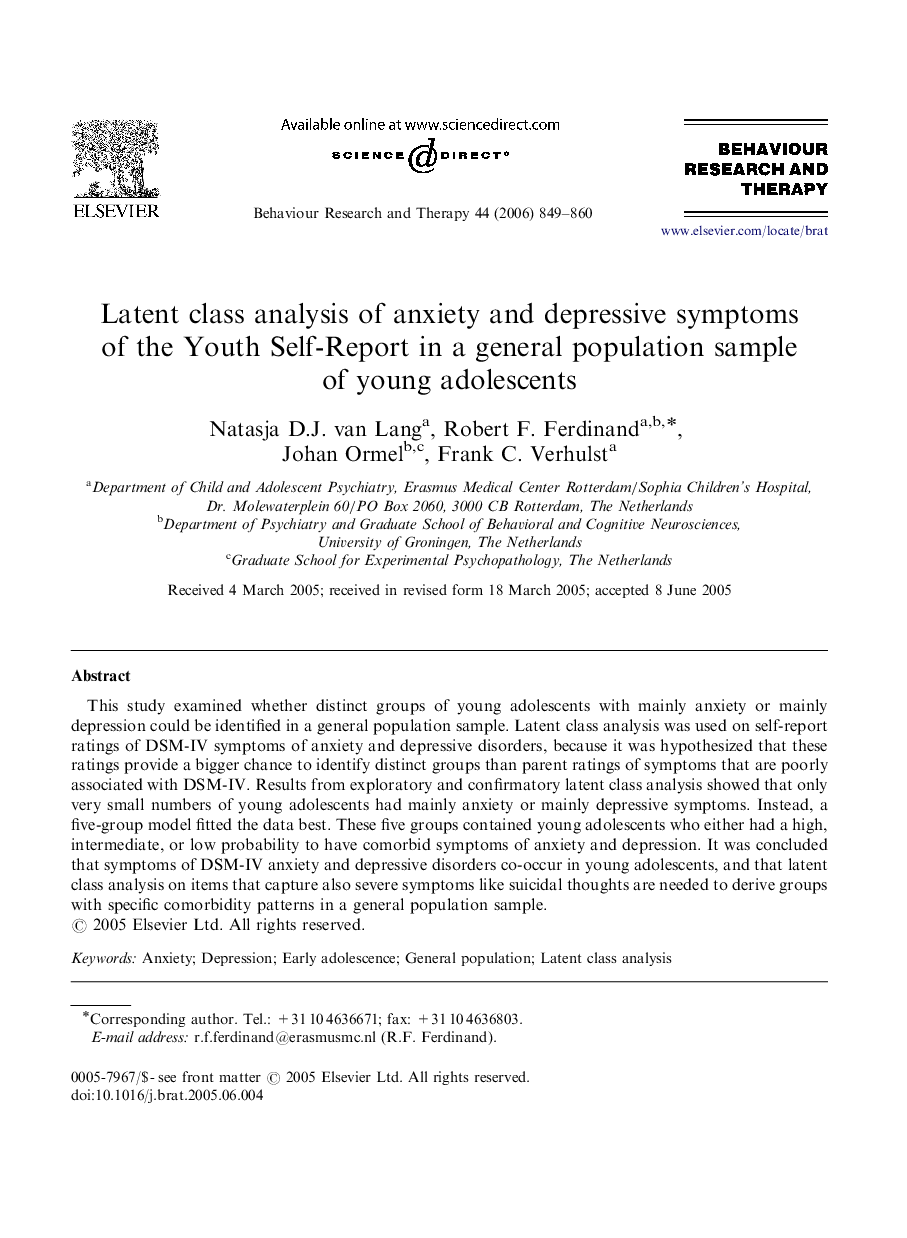| Article ID | Journal | Published Year | Pages | File Type |
|---|---|---|---|---|
| 10444979 | Behaviour Research and Therapy | 2006 | 12 Pages |
Abstract
This study examined whether distinct groups of young adolescents with mainly anxiety or mainly depression could be identified in a general population sample. Latent class analysis was used on self-report ratings of DSM-IV symptoms of anxiety and depressive disorders, because it was hypothesized that these ratings provide a bigger chance to identify distinct groups than parent ratings of symptoms that are poorly associated with DSM-IV. Results from exploratory and confirmatory latent class analysis showed that only very small numbers of young adolescents had mainly anxiety or mainly depressive symptoms. Instead, a five-group model fitted the data best. These five groups contained young adolescents who either had a high, intermediate, or low probability to have comorbid symptoms of anxiety and depression. It was concluded that symptoms of DSM-IV anxiety and depressive disorders co-occur in young adolescents, and that latent class analysis on items that capture also severe symptoms like suicidal thoughts are needed to derive groups with specific comorbidity patterns in a general population sample.
Related Topics
Health Sciences
Medicine and Dentistry
Psychiatry and Mental Health
Authors
Natasja D.J. van Lang, Robert F. Ferdinand, Johan Ormel, Frank C. Verhulst,
